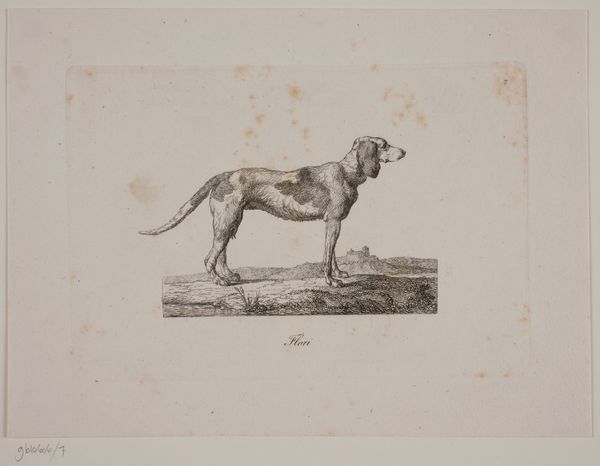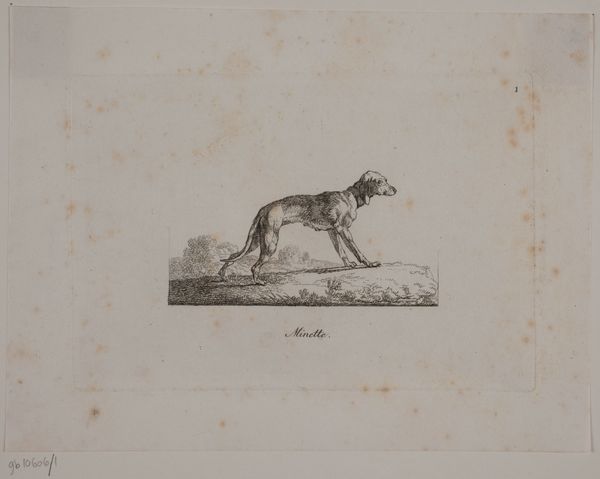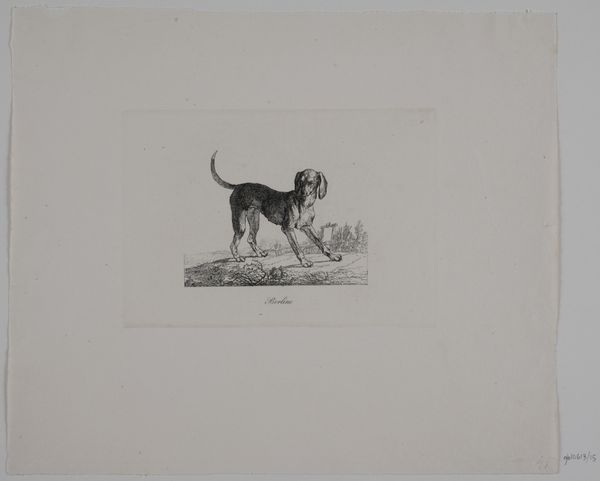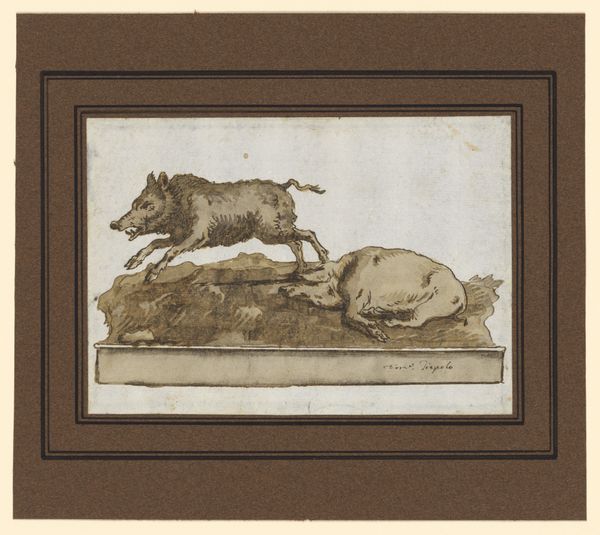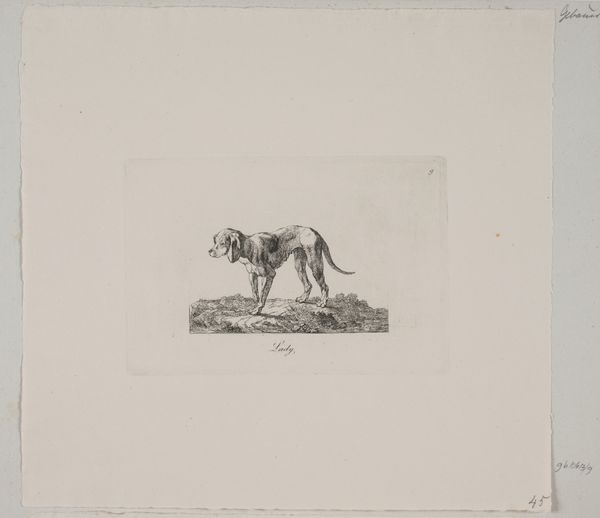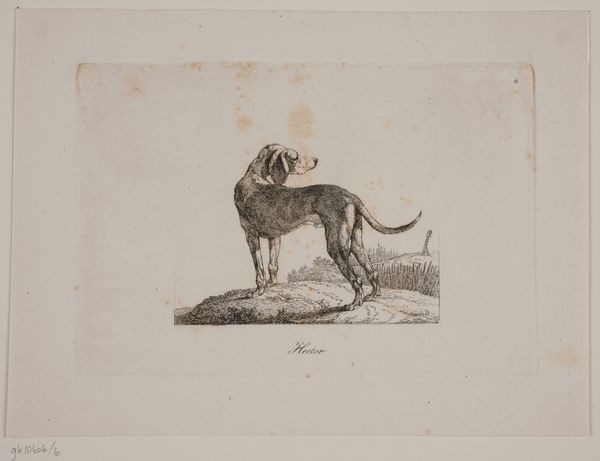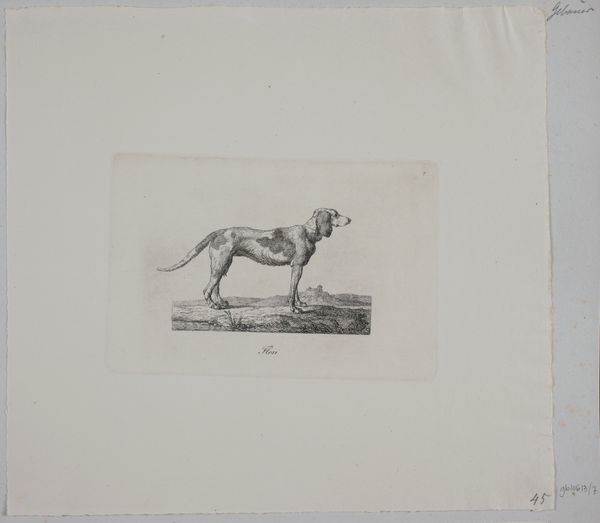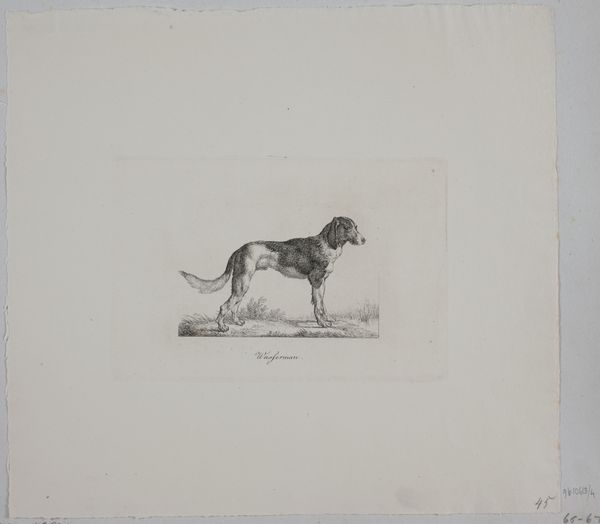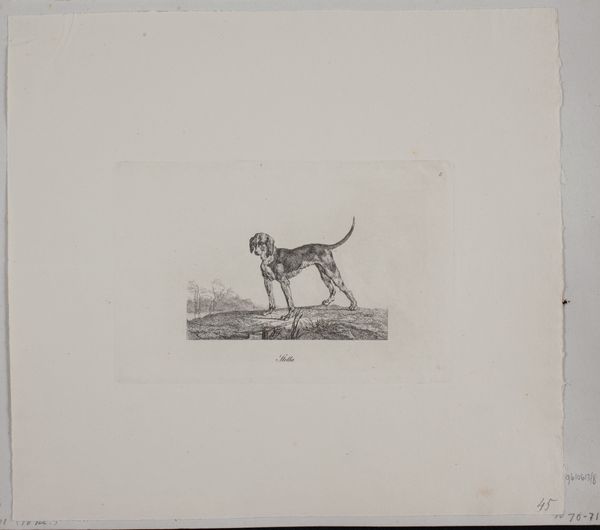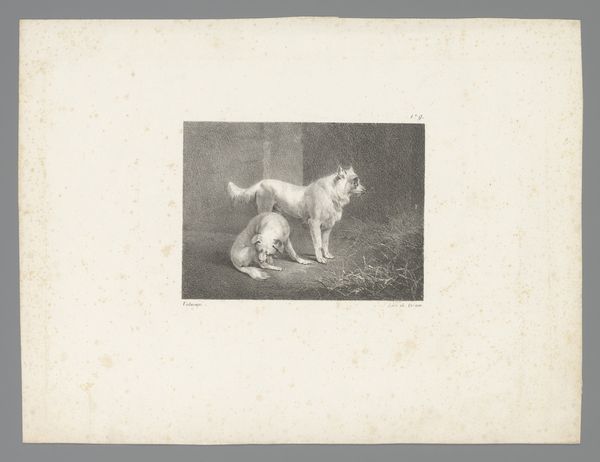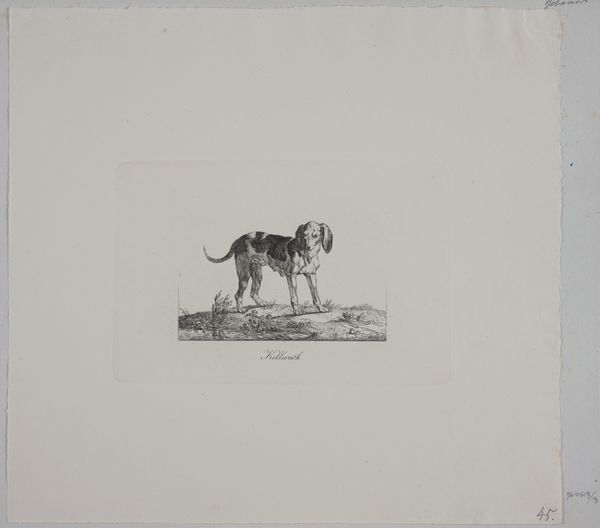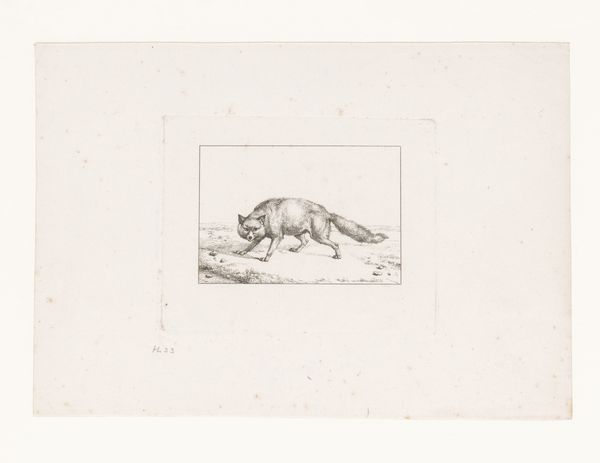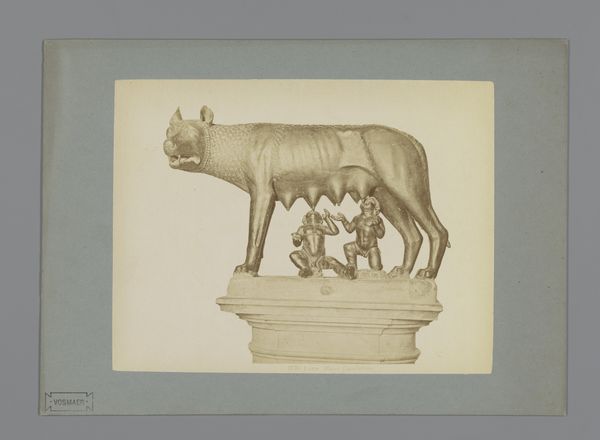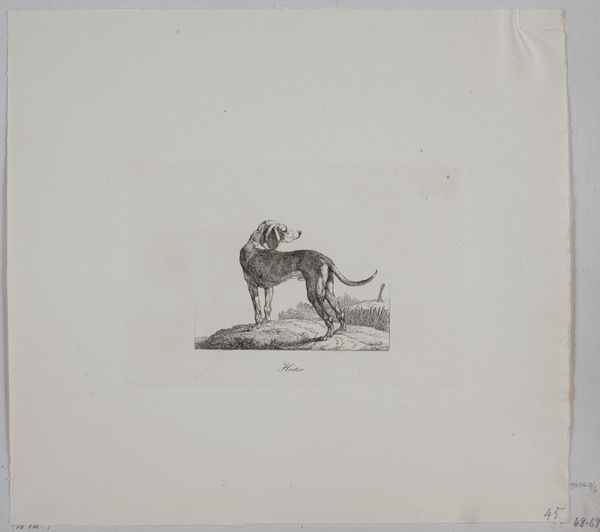
A Leopard, Moving to the Left (on a Base) 1736 - 1804
0:00
0:00
Dimensions: 4 7/16 x 6 7/16 in. (11.2 x 16.4 cm)
Copyright: Public Domain
Curator: Let's turn our attention to "A Leopard, Moving to the Left (on a Base)" a drawing by Giovanni Domenico Tiepolo, likely created sometime between 1736 and 1804. It's rendered in watercolor. Editor: Oh, this is curious. There's a certain stillness despite the implied movement. The palette is so muted, almost monochromatic, lending the scene an aged, melancholic air. The way the animal is presented—on a pedestal, no less—suggests a deeper narrative at play. Curator: Exactly! Tiepolo was working during a period where depictions of animals often served allegorical purposes, referencing power, status, or even moral qualities. Here, we see the leopard, traditionally a symbol of ferocity and nobility, presented almost as a specimen, a captured emblem for study and admiration within aristocratic circles. The fact that he has been set upon a plinth speaks to the popular taste for collecting classical statuary. Editor: I’m intrigued by the choice of watercolor. It feels… delicate, especially when paired with the potentially violent imagery of a leopard. Is Tiepolo perhaps subtly critiquing the way powerful figures and institutions "collect" and commodify nature? There’s a tension there that feels very pertinent. The image feels drained and emptied out, like it is drained from meaning and a signifier of the powerful ruling elite who may never see an actual real-life version of such animal. Curator: That’s a very insightful reading. Certainly, the lightness of touch, the seeming "sketchiness", contrasts sharply with the more bombastic representations of power common in Baroque art. And let’s not forget the socio-political context: Tiepolo was working in Venice, a republic on the wane, grappling with its identity in a changing world. I can certainly imagine it acting as a social commentary on the aristocracy of Venice in the sunset of its influence and wealth. Editor: I can see it too. This leopard on a base seems to speak to larger anxieties, about the instability of social structures. It almost suggests to me the artifice of these powerful animals who have only ever existed as icons and are perhaps now gone forever. Curator: This artwork prompts us to question the ways in which animals become emblems within human society, what this entails, and at whose expense. It encourages a critical engagement with art history. Editor: And invites a deeper conversation about historical inequalities and cultural preservation. It is nice how much social depth this small rendering brings.
Comments
No comments
Be the first to comment and join the conversation on the ultimate creative platform.
